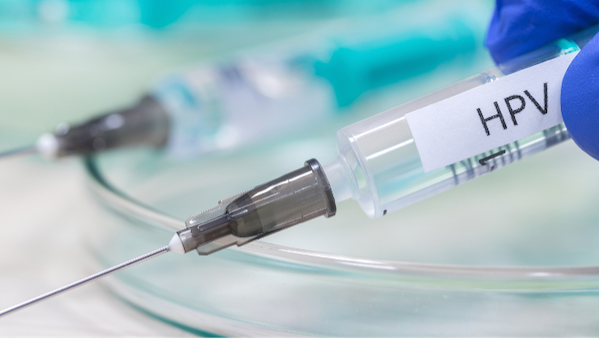FDA Approves Roche’s HPV Self-Collection Solution, Allowing Patients to Gather Their Own Samples in a Healthcare Setting
May 17, 2024
Source: drugdu
 415
415
Don Tracy, Associate Editor
Roche’s human papillomavirus solution is reportedly one of the first of its kind to be available in the United States.
 Roche announced that the FDA has approved its human papillomavirus(HPV) self-collection solution, one of the first of its kind approved in the United States. According to the company, the new tool allows individuals to collect their own samples in a healthcare setting for HPV testing, supporting early detection and prevention of cervical cancer. Analyzed through Roche’s Cobas molecule instrument, positive results require follow-up care with a healthcare provider.
Roche announced that the FDA has approved its human papillomavirus(HPV) self-collection solution, one of the first of its kind approved in the United States. According to the company, the new tool allows individuals to collect their own samples in a healthcare setting for HPV testing, supporting early detection and prevention of cervical cancer. Analyzed through Roche’s Cobas molecule instrument, positive results require follow-up care with a healthcare provider.
Roche’s fully automated Cobas 5800/6800/8800 Systems can provide up to 96 results in approximately three hours, 384 results for the Cobas 6800 System, and 1,056 results for the Cobas 8800 System in eight hours.1
“With vaccinations, innovative diagnostic tools and screening programs, achieving the WHO’s goal of eliminating cervical cancer by 2030 is within reach,” said Matt Sause, CEO, Roche Diagnostics, in a press release. “Our HPV self-collection solution helps support this goal by reducing barriers and providing access to HPV screening by allowing people to privately collect their own sample for HPV testing.”
In March, the FDA also approved the Cobas system to test for malaria in potential blood donors, adding another level of protection to blood supply. Roche expects the Cobas Malaria test to be available in the United States at some point during this quarter. For this indication, the Cobas test screens whole blood samples for five major species of Plasmodium parasites that are known to cause human infection.2,3
“As the first FDA-approved blood screening test for malaria, this represents an important step forward in safeguarding the global supply of donated blood," said Matt Sause, CEO, Roche Diagnostics, in a press release. “The approval of Cobas Malaria represents a significant advancement in malaria detection, offering healthcare professionals a reliable tool for donor screening and improving the safety of patients worldwide.”
According to the World Health Organization (WHO), HPV resulted in an estimated 620,000 cancer cases in women and 70,000 cancer cases in men by the end of 2019. Preventing these cancers is possible through prophylactic vaccination, HPV screening, and treatment of pre-cancer lesions. While cervical cancer is the most common form of cancer caused by HPV, it can also result in anal, vulvar, vaginal, mouth/throat, and penile cancers, which are less common.4
“Currently, cervical cancer is the only HPV-caused cancer for which screening tests are available,” reports WHO. “Screening tests are used to check for disease when there are no symptoms. The goal of screening for cervical cancer is to find precancerous cell changes before they become cancer and when treatment can prevent cancer from developing. Screening for cervical cancer is an important part of routine health care for people who have a cervix. This includes women and transgender men who still have a cervix.”
In most cases, there aren’t any symptoms involved with HPV, although a small number of cases result in small rough lumps (genital warts). Usually, HPV is expected to clear from the body after a year or two. If it doesn’t clear out on its own, it has the potential to result in changes to cervical cells, which lead to precancers that may become cervical cancer if left untreated after 15 to 20 years.4
“The early changes in cervical cells and precancers mostly do not cause symptoms,” reports WHO. “Symptoms of cervical cancer may include bleeding between periods or after sexual intercourse or a foul-smelling vaginal discharge. These symptoms may be due to other diseases. People with these symptoms should speak to their healthcare provider.”
Read more on
- Multiple batches of quadrivalent influenza virus split vaccine have been sub-packaged and submitted for lot release approval; expected to be released to the market soon after approval December 12, 2025
- Ab&B Bio-Tech CO., LTD. JS Lyophilized Human Rabies Vaccine Initiates Phase III Clinical Trials December 12, 2025
- The ‘Sweetest’ HPV Vaccine Market is Gone | Haibin Interview December 12, 2025
- InnoCare Pharma announced that its first independently developed next-generation TRK inhibitor, zoletrazinib, has been approved for marketing in China December 12, 2025
- Is PD-1/VEGF dual antibody + ADC becoming the standard configuration? December 12, 2025
your submission has already been received.
OK
Subscribe
Please enter a valid Email address!
Submit
The most relevant industry news & insight will be sent to you every two weeks.



